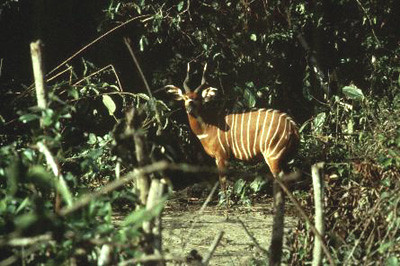Environmental archaeology is the study of early civilizations using techniques of biological markers that are intrinsic to the layer of human prehistory under investigation. Our understanding of ancient man is enhanced by concurrent study of pollen cores, plant and animal remains, fossil records; even abiotic evidence such as sediment layering, changes in river meanders, ocean levels, salinity records and other inanimate data provide great context to life in earlier times.
The environmental data can not only provide insights as to the time horizons of early civilizations, but also gives direct insights to the lifestyles of those who came before us; namely the dietary habits, proximity to water supplies, wood and clay used in primitive structures are all elucidated by collecting data on environmental features that pertain to the earlier time period.
Examples of archaeological conclusions that can be derived from certain environmental data include: intensity of resource exploitation; population levels and density; nature of society organization; division of labor. Conversely the joint study of conventional archaeological excavation combined with environmental data collection yields important information that is useful to researchers who are concentrating on historical ecology, since the data can be reduced to yield insights as to distributional range of plants and animals relative to human populations; in addition, insights are provided regarding methods of harvesting plants and animals in the prehistoric landscape, that abet our understanding of the time change of species numbers and the influence of man on extinction processes.The highlighted green part is the Congo Lowland Forest. The Northeastern Congo lowland forest is located in Congo. It borders Angola, Gabon, Zambia, and Sudan. Situated between 0° and 3° N latitude and 27° and 30° E longitude, the exact measurements are poorly defined, especially along its southern and western borders.
The biome that I am studying is Tropical and subtropical moist broadleaf forest. In this biome the rainfall is about the same the whole year. In these forests there is a large diversity of plants and animals. This area is very nutrient rich.
The region in particular is the northeastern Congo lowland forests. This area is home to more gorillas and chimpanzees than any other region in the world. The forest is about the size of Nevada and Oregon combined. Humans are impacting this region by mining and logging here.
In this biome there are many plants that are endemic (which means they only live in this area and nowhere else). There are more than 600 species of vascular plants in this biome. One of the producers is the Congo cockatoo. This plant is flowers all year around and is adapted in many ways to this habitat.
One of the herbivores here in my region in Congo lowland forest is the Okapi. This animal is closely related to the giraffe. Their diet consists mainly of grasses and fruit. One of their predators is the leopard. These animals have zebra like stripes on there hind quarters. The rest of an Okapi's body is chestnut. Also these animals are highly endangered.
One of the animals in my region is the Congo clawless otter. This species is highly endangered. The otter in endemic to this region (this means that it is only found here). They are carnivores and there diet consists of lots of small invertebrates. They live for 10-15 years. Many poachers hunt them for there fur. The species is almost gone from the world.

In the Congo there are more then one million people, who speak more then 400 different languages. The people who live who live on the banks of the river use it to the best of their advantage. Instead of growing plants they use the water for fishing . Others use the river to grow crops such as corn, yams, peanuts, sugarcane, tobacco, and cotton. Because of the location , crops are able to grow quickly in the hot moist air. There many tribal settlements here.

The human impact on this region is huge. Some of the main threats here are mining and logging. Because of this the Lowland forests are very venerable to being destroyed.

Northeastern Congolian lowland forests
The biome I studied was north eastern Congo forests. This area is very unique because of its endemic species. This area is very endangered because of some major human impact in that region. Humans are ruining this area by mining and logging. This area is home to many primates- more than any other region. The reason I chose this region was I wanted to do something in the Congo and because I thought that it would be very interesting .


No comments:
Post a Comment